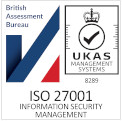However you choose to manage your accreditation process, the end result is a printed badge or credential for everyone needing access to your venue. But go to you-tube and you can find plenty of videos demonstrating how easy it can be to enter a high-profile event by forging badly designed badges.
These are usually fans finding images of credentials online and trying their luck getting into an event they want to be at. But the risk is real and the consequences potentially deadly if you allow illegal workers, criminals or terrorists into restricted areas of your event.
7 things you can do to stop your badges being forged:
1 Stamp out the Insider Threat
Implement an accreditation procedure that tells you exactly who the workers and temporary staff entering your venue are. Know they are legally allowed to work, have the necessary qualifications and are not suspected criminals or terrorists. Do this and you’ll drastically reduce the chance of an Insider helping others to forge credentials. Our whitepaper ‘How to Use Accreditation to Secure Your Venue and Events’ can help with this.
2 Use a unique identifier
If you hide a unique ID number for every person in a bar code, QR code or RFID chip, a quick scan at your access control points will instantly be able to tell you if that pass is valid, and whether that person can gain entry into a specific area of the event. Don’t allocate ID numbers until the last minute and you’ll cut the risk of an Insider being able to leak information.
3 Prohibit the sharing of badge images online
Make it company policy – your staff, contractors and volunteers need to know that they are prohibited from sharing images of their credentials online. If you catch them bragging about their next job at Sunday’s rugby match, they need to go.
4 Put something on the back
Put something (anything) on the back of the pass. Maybe a map of the venue, or important timings. When people share photos of their badges online, they almost always display the front. No one knows what is on the back.
5 Release badges as late as possible
At large multi-venue events, it’s often easier to ask contractors to collect and distribute the badges to their workers in advance. But do this as late as possible to keep designs confidential and make sure that they give you a record of exactly who is in possession of their badge and who is not.
6 Keep new designs confidential
It’s a good idea to change designs periodically – a simple change in background colour will do, but keep the change confidential until you need to print and distribute badges.
7 Add anti-counterfeit measures
A strip of micro text, or use of a hologram, black light ink or thermal ink will make it virtually impossible to forge a badge correctly. Just make sure your security and access control teams are briefed on what to look for and how to check badges are the real deal.





![EAS-Accredit-300dpi[22]](https://www.accredit-solutions.com/wp-content/uploads/2024/01/EAS-Accredit-300dpi22-300x156.png)

